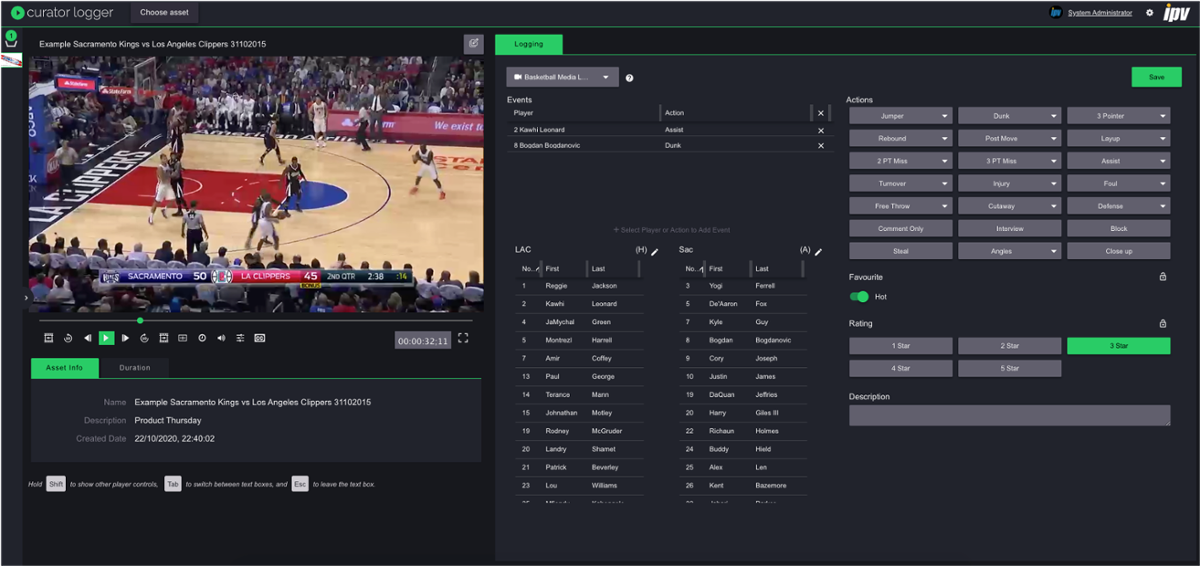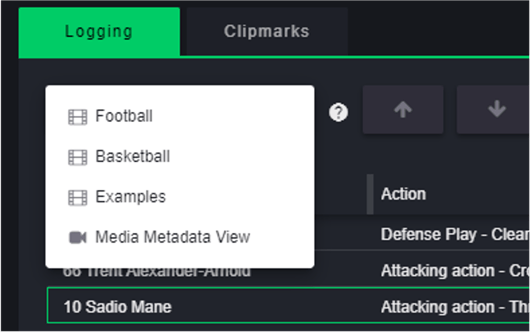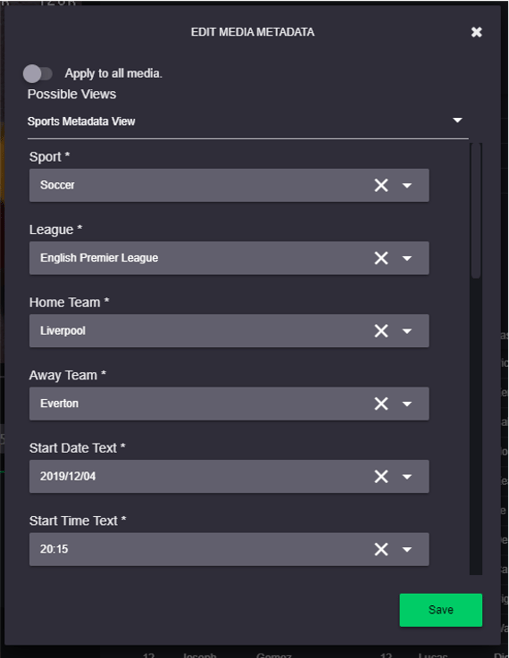
High quality metadata is the best way to add and retain value in your content
It’s obvious that live sports production is very different from the refined atmosphere of a post production suite. While no one in the business would suggest that post production is easy - it has a very specific set of expert skills - it does not have the same real time white-hot pressure of a live sports broadcast.
A technical tour de force
There’s no need to explain the stress that comes with live broadcasting. In addition to nervousness about simply being on air, there’s the constant worry of whether or not everything will work as it should. Testing and rehearsals can alleviate this to an extent but there’s always the possibility of something going wrong. That would be true for a simple live contribution. With sports, chances are that there are a dozen cameras or more on the playing field, and still more on presenters and interviewees. Ironically, the technical artistry that gets big sports productions on air isn’t seen or appreciated by viewers. It’s only when there’s a glitch that home sports consumers even think about what’s necessary to bring these stunning pictures into their homes.
So it’s not surprising that, in the heat of the moment, sports TV producers don’t necessarily have metadata at the top of their minds. And that’s a problem, because without high quality metadata capture at the time of the event, much, if not most, of the value of the content effectively goes down the drain. Imagine filling an Amazon-type warehouse with three million products in cardboard boxes with no labels. It wouldn’t work. It couldn’t function as a business.
Like a fire hose
If the primary and immediate value of content in live sports is the instant broadcast to viewers watching at the time, then the secondary value is reuse of that material in later transmissions (and on other non broadcast formats such as social media). Don’t be misled by the word “secondary” here. Over time, the stored - as opposed to live - media could be even more valuable than the live broadcast itself. Shown as replays during the match, or in highlights programming, the content is still relevant and timely. Later use in compilations, award programs and as illustrations and comparisons with more recent matches adds to the value, and the total worth of the “long tail” over a long period could be significant.
But none of this post match value is accessible if you can’t find your media quickly and accurately. There’s little point in being able to find it days after it was needed for a transmission, and there’s no point at all in even storing it if nobody knows it’s there.
But how do you create metadata when live content is gushing into the system like water from a fire hose?
There are simple and effective ways to make it happen.
Streamlining metadata input: less is more
With metadata, it’s not about quantity so much as quality. A small amount of relevant, accurate, consistent and timely metadata is preferable to masses of untidy and vague information. So, as with every other aspect of live sports broadcasting, the key to capturing effective metadata is streamlining and efficiency.
Some metadata about the message (i.e. the content) can come from the messenger. Organizing your production so that you can record where and who your content has come from can give important clues about the content itself: for example, an interview with players in a changing room isn’t likely to contain images of goals being scored. Simple but consistent file naming and file folder conventions can help, as well as being human-readable as a last resort.
But for detailed and optimized metadata, there needs to be a separate, comprehensive and flexible database. This database ideally needs to be part of a modern Media Asset Management (MAM) system.
Perhaps the best example is IPV Curator, a powerful MAM and remote editing solution that’s optimized for efficient metadata creation and relied upon by leading sports organizations including Turner Sports, the Golf Channel, Altitude Sports, and NBA TV for their sports logging and remote editing needs.
A carefully chosen vocabulary
Curator is fluent in metadata. It’s at the heart of its architecture and is the source of many of its advanced capabilities. For sports, it has customizable metadata templates that allow sports organizations to create dedicated logging workspaces with dedicated buttons for categories of events, based on the sport and specific game being played.

Logging workspaces could include buttons for all the common events for that game type - so for European Soccer, the logging workspace would include a set of buttons labelled “goal”, “foul”, “penalty”, “substitution” and so on.
One person could operate one logging workspace for specific types of events, while another could be assessing the action and labelling events on the pitch in terms of their excitement or likely appeal to an audience. Ranking these from one to ten would mean that for a 30 second promotion (let’s say for the evening soccer analysis show) you’d include clips with a ranking of one to three, and for the show itself, you could choose events ranked one to seven. None of this replaces the human skills of the production team, but it does ensure that they have relevant and appropriate material in front of them instantly, and at all times.
Creating consistency with controlled vocabularies and real-time sports data feed integrations
We recommend creating logging workspaces upfront and using an agreed vocabulary rather than leaving Loggers/Media Managers to create their own - this ensures consistency across the organization, making it far easier for Editors to discover and monetize all the relevant content later down the line. If everyone is using the same terminology then there’s no ambiguity, no information lost, and searches will be more decisive.
Taking the level of detail possible even further, Curator integrates with leading sports data feeds, providing Loggers with the most accurate and relevant game information for the specific game being played. The logging workspace can be configured to display only the names of the players who are actually on the field at that moment rather than displaying the entire roster. This integration and configuration makes logging far easier and more accurate.

Logging shouldn’t stop when the game ends
While live logging is essential for ensuring you’re first to air with your highlights reel at the end of the game, the need for rapid and reliable metadata enrichment doesn’t end when the game does.
Live-logged games may need additional logging after the game has finished to ensure the less time-sensitive but still important events - such as fan reactions or interviews - are captured. These moments may not be logged in real-time as they may not be relevant for the immediate post-game highlights reel, but they still provide great moments for follow-up content or for future archive use.
Additionally, sports organizations record plenty of content that may not need to be logged in real-time, such as training sessions, player interviews, or other team events. Creating exciting content from these moments is vital for keeping fans engaged, especially when it’s off-season or when no games are being played (i.e. due to global pandemics).
Post game: efficient Batch Logging
Sports teams often record the same shot from multiple different cameras, all of which need logging with the same metadata. Curator features a convenient and powerful Batch Logging feature which enables Loggers to apply metadata to multiple clips at once - perfect for multiple angles of the same shot, training day footage, etc. Paired with the aforementioned carefully chosen vocabulary - this provides users with a robust library of easily searchable content for later use.
Post game: automated metadata enrichment
Manual logging is perfect for accurately capturing the action as it happens and is essential to helping ensure you’re first to air with your highlights reel, but there’s no denying that AI automation can help you enrich your pre-recorded and archive content far more rapidly than a human ever could. By using AI metadata enrichment, you can automatically create up to 214,000 metadata tags per hour of footage, helping make your archive easily discovered and monetized.
AI speech to text transcription
Curator integrates with leading AI services (AWS, GCP, Azure, and Veritone) to convert spoken audio to timecode tagged text, so that editors can discover content based on what was said - perfect for discovering content based on what the game commentary.
Where Curator adds value over other MAM systems that offer similar integrations is by enabling you to select the best audio track when sending the file asset to the AI service for transcription; for example, you could send just the commentary audio track without the background noise to ensure the best transcription results. From a search and discovery perspective, Curator provides confidence filters and controlled vocabularies so you can narrow down your searches to the best possible results.
AI object, face, and logo detection
Curator also utilizes AI object, face, and logo detection services for metadata enrichment, helping sports teams to automatically add relevant metadata from assets based on who or what is visible inside that clip.
Sports organizations can use this capability to:
- Auto-tag assets with player names, based on facial recognition or names on their jerseys
- Identify key events, such as goals, red/yellow cards, etc.
- Identify sponsor’s logos, making it easy for you to demonstrate sponsor screen time and exposure and to justify/increase sponsorship spending
As with speech-to-text, Curator adds value to AI object, face, and logo detection services by enabling confidence filtering, controlled vocabularies, and combining the capabilities of Curator Analytics with AI results to identify trends in your assets, highlight top goal scorers, how much screen time particular players received, how much exposure your sponsor’s logos received, etc.
Finally
Metadata is the key to retaining and unlocking value in your content. Ensuring you’re capturing the right metadata for live broadcasts and pre-recorded content makes the future discovery of that content much easier, maximizing the potential for reuse. This capability has been the saving grace for many sports organizations who needed to keep fans entertained and sponsors happy throughout the COVID-19 crisis by enabling them to create new content from old content buried deep in their archives.
IPV Curator is a cutting edge MAM that manages your entire metadata estate and enables remote, collaborative workflows, and is trusted by the likes of the Golf Channel, Altitude Sports, Turner Sports, and NBA TV. There’s never been a better time to upgrade your sports media workflows.
What’s next?
Questions on what Curator can do for you? Book time directly with Gabrielle below to see how Curator can help you take control of your video assets and produce quality video content faster than ever! 👇👇👇
Speak Your Mind